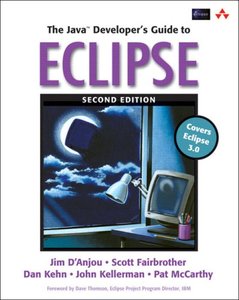Web Business Engineering: Using Offline Activities to Drive Internet Strategies
暫譯: 網路商業工程:利用離線活動推動網路策略
Nick V. Flor
- 出版商: Addison Wesley
- 出版日期: 2000-10-13
- 定價: $1,400
- 售價: 5.0 折 $700
- 語言: 英文
- 頁數: 256
- 裝訂: Paperback
- ISBN: 020160468X
- ISBN-13: 9780201604689
-
相關分類:
企業資源規劃 Erp、行銷/網路行銷 Marketing
立即出貨(限量) (庫存=1)
買這商品的人也買了...
-
 $199The LAN Manager's Internet Connectivity Guide
$199The LAN Manager's Internet Connectivity Guide -
 Cisco Router OSPF: Design and Implementaion Guide
Cisco Router OSPF: Design and Implementaion Guide$2,090$1,986 -
 COM 本質論 (Essential COM)
COM 本質論 (Essential COM)$780$616 -
 Network Resource Planning Using SAP R/3 BAAN and PeopleSoft
Network Resource Planning Using SAP R/3 BAAN and PeopleSoft$1,930$1,834 -
 $299Internet Open Trading Protocol
$299Internet Open Trading Protocol -
 SQL Server 2000 管理實務
SQL Server 2000 管理實務$680$537 -
 Oracle 9i 資料庫建置與管理應用
Oracle 9i 資料庫建置與管理應用$490$417 -
 Oracle 9i 資料庫管理指南
Oracle 9i 資料庫管理指南$480$379 -
 學物件導向的第1本書
學物件導向的第1本書$250$195 -
 鳥哥的 Linux 私房菜
鳥哥的 Linux 私房菜$560$476 -
 UML 設計實作寶典
UML 設計實作寶典$650$553 -
 Web 好色-網頁色彩學
Web 好色-網頁色彩學$420$328 -
 PHP & MySQL 完全架站攻略第二版
PHP & MySQL 完全架站攻略第二版$620$527 -
 計算機概論 (Computer Science: an overview, 7/e)
計算機概論 (Computer Science: an overview, 7/e)$550$523 -
 系統程式 (System Software: An Introduction to Systems Programming, 3/e)
系統程式 (System Software: An Introduction to Systems Programming, 3/e)$600$588 -
 資訊架構學網站應用 (Information Architecture for the World Wide Web, 2/e)
資訊架構學網站應用 (Information Architecture for the World Wide Web, 2/e)$680$537 -
 Red Hat Linux 9 實務應用
Red Hat Linux 9 實務應用$650$514 -
 Java 錦囊妙技 (Java Cookbook)
Java 錦囊妙技 (Java Cookbook)$980$774 -
 Red Hat Linux 9 架站實務
Red Hat Linux 9 架站實務$620$490 -
 數位邏輯設計 (Digital Design, 3/e)
數位邏輯設計 (Digital Design, 3/e)$580$568 -
 鳥哥的 Linux 私房菜─基礎學習篇增訂版
鳥哥的 Linux 私房菜─基礎學習篇增訂版$560$476 -
 人月神話:軟體專案管理之道 (20 週年紀念版)(The Mythical Man-Month: Essays on Software Engineering, Anniversary Edition, 2/e)
人月神話:軟體專案管理之道 (20 週年紀念版)(The Mythical Man-Month: Essays on Software Engineering, Anniversary Edition, 2/e)$480$379 -
 Exchange Server 2003 管理實務
Exchange Server 2003 管理實務$580$493 -
 $1,058Software Engineering: A Practitioner's Approach, 6/e
$1,058Software Engineering: A Practitioner's Approach, 6/e -
 RFID 技術與應用
RFID 技術與應用$480$379
商品描述
Description
Build business Web sites that add real value and deliver sustainable competitive advantage!
- The first step-by-step guide to analyzing business processes and adapting them for the Web.
- Helps Web developers integrate today's newest technologies with today's best management practices.
- Practical coverage for B2B, B2C, and beyond.
Nick V. Flor is Professor of Information Systems at Carnegie Mellon University's top-ranked Techno-MBA school, the Graduate School of Industrial Administration, and Director of the FlexMode distance education program. He was the first professor at a Top 20 business school to teach business uses of the Web, and has consulted worldwide on value-added Web business applications. ![]()
Table Of Contents
Preface.Acknowledgments.
Introduction.
SECTION 1: WEB BUSINESS 101.
1. Business Building Blocks.Objectives.
Introduction.
How an Idea Becomes a Product: The Case of the Guitar.
The Value Chain and the Web.
2. Competition and the Web.
Objectives.
Introduction.
Understanding the Effects of Competition: The Case of the Guitar Maker.
Basic Strategic Moves.
3. The Role of Information in the Value Chain.
Objectives.
Introduction.
How Information Supports the Value Chain for Physical Products.
Knowledge-Intensive Products.
Pure Information-Based Products.
New Business Models: The Autonomous Business.
4. Value and Valuing a Website.
Objectives.
Introduction.
The Web Site Proposal.
Value: Return on Investment (ROI).
Net Present Value (NPV).
Some Alternatives to NPV & ROI: Payback and IRR.
SECTION 2. WEB BUSINESS ENGINEERING: A QUICK PRIMER.
5. Introduction to Web Business Engineering: Motivation and Basic Principles.
Objectives.
Introduction.
Definition: Web Business Engineering.
Ways of Studying Business Processes.
The Web Business Engineering Framework.
Basic Steps in Web Business Engineering.
6. Quick Primer: Step 1, Map Business Activities.
Objectives.
Introduction.
Mapping Notation.
The Employee Distance Education Case (EDEC).
7. Quick Primer: Step 2, Model Activity Value.
Objectives.
Introduction.
Valuing a Business Activity.
Case (Continued): Building an Interaction Cost Model for the EDEC Assignment Mailings.
8. Quick Primer: Step 3, Diagnose Problems And Opportunities.
Objectives.
Introduction.
Case (Continued): Diagnosing the EDEC Mailing Costs.
9. Quick Primer: Step 4, Design Treatments.
Objectives.
Introduction.
Case (Continued): Finding Treatments for the EDEC Mailing Assignments.
SECTION 3: CASE STUDIES: PUTTING OFFLINE ACTIVITIES ONLINE.
10. WBE in Small Businesses: The Case of the Hair Salon.
Objectives.
Introduction.
Case Study: Hair Crafters.
Step 1: Map Business Activity (Haircut).
Step 1: Map Business Activity (Hair Care Products).
Step 1: Map Business Activity (Reminder Card).
Steps 2 and 3: Model Activity Value, Diagnose Problems and Opportunities.
Step 4: Design Treatments.
11. WBE in Large Institutions: The Online Survey Case.
Objectives.
Introduction.
Case Study: Background.
Step 1: Map Activity (Distributing the Survey).
Step 1: Map Activity (Result Generation).
Step 1: Map Activity (Result Distribution).
Step 2: Model the Value of the Survey Activity.
Step 3: Diagnose the Survey Activity.
Step 4: Design Treatments.
12. WBE in Social/Cultural Situations: The Case of the Online Matchmaking Service.
Objectives.
Introduction.
Case Study: Background.
Step 1: Map Newspaper Matchmaking.
Step 2: Value Newspaper Matchmaking.
Step 3: Diagnose Newspaper Matchmaking.
Step 4: Design Treatments for Newspaper Matchmaking.
SECTION 4: CASE STUDIES: APPLYING WEB BUSINESS ENGINEERING TO ONLINE ACTIVITIES.
13. Marketing Your Website.
Objectives.
Introduction.
Ten Free Ways of Generating Traffic.
The Product.
Step 1: Map (Prototype) Activity.
Step 4: Treat Business.
14. Fundamentals of Memetic Marketing.
Objectives.
Introduction.
What Makes a Good Meme?
How a Meme Spreads Without Technology.
How to Use the Web to Replicate a Meme.
Example: A Good Meme and Web Replicator.
15. Issues in Revenue Generation for Information-Based Web Businesses.
Objectives.
Introduction.
Case: Dating Expert Matchmaking Activity.
Deciding What to Charge For: High Value, Low Risk.
Information Currency.
Conclusion.
Bibliography.
Index. 020160468XT04062001
商品描述(中文翻譯)
描述
建立能夠增添真正價值並提供可持續競爭優勢的商業網站!
- 首本逐步指南,分析商業流程並將其適應於網路。
- 幫助網頁開發者將當今最新技術與最佳管理實踐整合。
- 實用的涵蓋範圍包括 B2B、B2C 及其他。
許多網頁開發者擁有強大的技術技能,但對商業流程的理解有限;相反地,許多管理者對商業流程非常熟悉,但不懂得如何利用網路技術來改善這些流程。本書彌補了這一差距,為技術專業人士和管理者提供了一種系統化的方法,分析他們的離線流程並識別通過網路技術增值的最佳機會。每個商業都提供了一個利用網路技術增加收入和降低成本的金礦,但每個商業都是不同的。本書是第一本幫助你識別你的機會並付諸行動的書籍。《網路商業工程》首先提供了一個快速入門,旨在幫助網頁開發者以管理者的方式思考商業。接下來,它展示了如何繪製商業流程並建立描繪其成本和效益的「價值模型」;並利用這些地圖,識別利用網路技術增值的關鍵機會。Flor 展示了如何發現創新的方式使用網路,這些方式遠超過支持現有的商業活動。
Nick V. Flor 是卡內基梅隆大學頂尖的科技 MBA 學校——工業管理研究所的資訊系統教授,並且是 FlexMode 遠距教育計畫的主任。他是第一位在前 20 名商學院教授網路商業應用的教授,並在全球範圍內提供增值網路商業應用的諮詢服務。
適合的課程
網頁程式設計與設計。
目錄
- 前言。
- 感謝。
- 介紹。
第一部分:網路商業 101。
1. 商業基礎。
- 執行摘要。
- 目標。
- 介紹。
- 一個想法如何變成產品:吉他的案例。
- 價值鏈與網路。
2. 競爭與網路。
- 執行摘要。
- 目標。
- 介紹。
- 理解競爭的影響:吉他製造商的案例。
- 基本策略行動。
3. 資訊在價值鏈中的角色。
- 執行摘要。
- 目標。
- 介紹。
- 資訊如何支持實體產品的價值鏈。
- 知識密集型產品。
- 純資訊型產品。
- 新商業模式:自主商業。
4. 網站的價值與評估。
- 執行摘要。
- 目標。
- 介紹。
- 網站提案。
- 價值:投資報酬率 (ROI)。
- 淨現值 (NPV)。
- NPV 和 ROI 的一些替代方案:回收期和內部報酬率 (IRR)。
第二部分:網路商業工程:快速入門。
5. 網路商業工程介紹:動機與基本原則。
- 執行摘要。
- 目標。
- 介紹。
- 定義:網路商業工程。
- 研究商業流程的方法。
- 網路商業工程框架。
- 網路商業工程的基本步驟。
6. 快速入門:步驟 1,繪製商業活動。
- 執行摘要。
- 目標。
- 介紹。
- 繪圖符號。
- 員工遠距教育案例 (EDEC)。
7. 快速入門:步驟 2,模型活動價值。
- 執行摘要。
- 目標。
- 介紹。
- 評估商業活動的價值。
- 案例(續):為 EDEC 作業郵件建立互動成本模型。
8. 快速入門:步驟 3,診斷問題與機會。
- 執行摘要。
- 目標。
- 介紹。
- 案例(續):診斷 EDEC 郵寄成本。
9. 快速入門:步驟 4,設計處理方案。
- 執行摘要。
- 目標。
- 介紹。
- 案例(續):為 EDEC 郵寄作業尋找處理方案。
第三部分:案例研究:將離線活動轉移到線上。
10. 小型企業中的 WBE:髮廊的案例。
- 執行摘要。
- 目標。
- 介紹。
- 案例研究:Hair Crafters。
- 步驟 1:繪製商業活動(剪髮)。
- 步驟 1:繪製商業活動(護髮產品)。
- 步驟 1:繪製商業活動(提醒卡)。
- 步驟 2 和 3:模型活動價值,診斷問題與機會。
- 步驟 4:設計處理方案。
11. 大型機構中的 WBE:線上調查案例。
- 執行摘要。
- 目標。
- 介紹。
- 案例研究:背景。
- 步驟 1:繪製活動(分發調查)。
- 步驟 1:繪製活動(結果生成)。
- 步驟 1:繪製活動(結果分發)。
- 步驟 2:模型調查活動的價值。
- 步驟 3:診斷調查活動。
- 步驟 4:設計處理方案。
12. 社會/文化情境中的 WBE:線上配對服務的案例。
- 執行摘要。
- 目標。
- 介紹。
- 案例研究:背景。
- 步驟 1:繪製報紙配對。
- 步驟 2:評估報紙配對的價值。
- 步驟 3:診斷報紙配對。
- 步驟 4:為報紙配對設計處理方案。
第四部分:案例研究:將網路商業工程應用於線上活動。
13. 行銷你的網站。
- 執行摘要。
- 目標。
- 介紹。
- 十種免費產生流量的方法。
- 產品。
- 步驟 1:繪製(原型)活動。
- 步驟 4:處理商業。
14. 模因行銷的基本原則。
- 執行摘要。
- 目標。
- 介紹。
- 什麼使一個模因變得優秀?
- 模因如何在沒有技術的情況下擴散。
- 如何利用網路複製模因。
- 例子:一個好的模因和網路複製者。
15. 資訊型網路商業的收入生成問題。
- 執行摘要。
- 目標。
- 介紹。
- 案例:約會專家配對活動。
- 決定收費的內容:高價值、低風險。
- 資訊貨幣。
- 結論。
參考文獻。
索引。 020160468XT04062001















